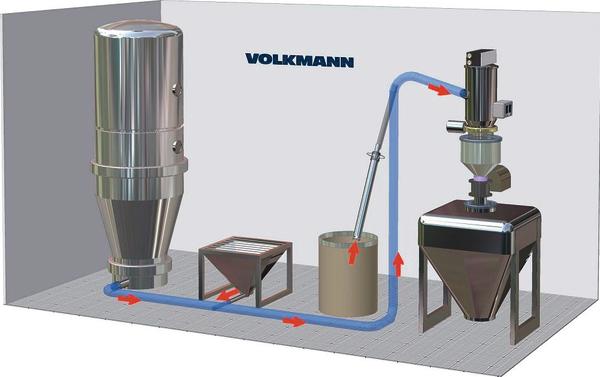When prompted to say what first springs to mind in connection with Reach, the spontaneous reaction of most manufacturers, importers and users is limited to the duty to register chemical substances according to EU Directive 76/548. However, there are also far-reaching consequences for the safe handling of dangerous chemicals on site. Especially when handling powders or fine dusts, account must be taken of the potential release of solids into the atmosphere.
Thomas Ramme
The protection of staff and the environment is a top priority today. Even coarser granules, pills or pellets are not necessarily simple to handle because these materials often contain easily airborne and volatile fines. Since the transport of solids obviously cannot be avoided in a production line, it is the duty of the process engineers to select a safe transfer method. On this basis, traditional conveying systems can be ruled out. Open bucket conveyors, unprotected conveyor belts and mechanical screw conveyors either lead to particle emissions or require considerable effort for dismantling and cleaning. These technologies tend to result in large quantities of product residues, which can sometimes cause a chemical reaction between the different substances. Manual transport, lifting and tipping devices are equally unsuitable. Even the most careful operator will not be able to avoid dust clouds whilst emptying bulk materials from bags and drums, especially since this work frequently has to be completed within a narrow time frame. After analysing the actual working conditions on its own production site, a leading German chemicals manufacturer came to the same conclusion and opted to automate its powder and bulk material transport. To facilitate a sealed process, it decided to use a vacuum conveying system from Volkmann. Thanks to this system, the solids can now be drawn easily from A to B through a conveying pipe or hose. Nothing protrudes into the material flow and the conveying line can be completely emptied, so that only minimal residues remain. If necessary, the suction line can also be washed out with a cleaner.
Another advantage of vacuum conveying is that the materials are picked up flexibly and dust-free. Powder can be transferred by vacuum from sacks, drums, containers or big bags. After transportation, the material is fed into mixers, vessels, silos or possibly filling machines or tablet presses. Owing to the unique method of vacuum production, almost any kind of bulk material can be transferred.
Online-Info www.cpp-net.com/2309407
Share:







